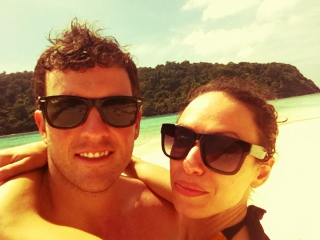Final Blog Post for Educ-67131-1
As this course draws to a close, I have found this to be one
of the easier reflections I have had to write.
I have enjoyed this course very much, as it has reintroduced me to some
wonderful web 2.0 technologies that I have learned this past 16+ months. More importantly, this course has given me a
GAME plan (pun intended!) in order to implement these technologies. I felt that I was accumulating so many great
tools for my toolbox, but was starting to forget how and when I could use them.
Why hadn’t I been using them? Did I think they were too
hard? Did they seem irrelevant? Or perhaps (shockingly) was I scared to use
them with my classes? Case in point;
Edmodo. I have known about this site for years, but had strayed away from
it. Admittedly, I felt that because I
was a Physical Education teacher, I wouldn’t need it. But as I logged in and got my home form using
it, I had a couple of epiphanies:
1. My
students immediately took to it, how could I have forgotten about its fantastic
usefulness, and 2. Why can’t I use this
for all my Physical Education classes next year? I could post fitness scores and ideas for
games, and connect with students (11 classes!) on an entirely different level.
Up until these past few weeks (I am going back to the tool
metaphor) I felt that I had all these tools, but just didn’t know how to use
them in the right areas. They were
starting to get lost in the shuffle. This
course has made me realize that even as a Physical Education teacher, I can do
problem based learning activities. I can
have my students collaborate on projects, and I can also use digital
storytelling in a truly powerful way (Laureate
Education Inc., 2009). I am able
to Integrate Technology Across multiple Content
Areas.
The GAME plan (Cennamo, Ross & Ertmer 2010) is already
in my arsenal of teaching techniques, but I never called it that. When
explaining new skills and tactics, I always set goals for my students.
There was an action plan to try and meet those goals. I monitored their progress, to see if
I was in fact, teaching them properly, and I evaluated them using
curricular rubric. I did not however,
create my lessons in an organized fashion as I did during this course. I intend on using the GAME template for my
lessons that are going to require use of technologies, and incorporating more
of these technologies into my lessons.
Finally, I think I want my students to become more aware of
the GAME. I want them to know that the
lesson is structured in a way that will help them learn the best. I will definitely be going “back to the
drawing board” this summer, it’s time for me to buck up a little more, and get
myself deeper into the GAME.*
* as
a pe teacher, I feel I need to try and use as many sports clichés as possible.
References
Cennamo, K., Ross, J., & Ertmer, P.
(2010). Technology integration for meaningful
classroom use: A standards-based approach. Belmont, CA: Wadsworth,
Cengage Learning.
Laureate Education, Inc. (2009). Digital storytelling.
Baltimore, MD: Dr. Arnie Abrams.
Photos
from:

.jpeg)










